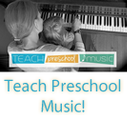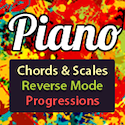A Note from Natalie: I periodically incorporate composition into my piano lessons, but I frequently forget about the value of arranging, especially for young students. Doug offers some wonderful and practical suggestions that you and your students can try right away!
Teaching arranging to young piano players is an effective and fun way to stimulate their creativity while reinforcing and improving musical fundamentals like reading and ear skills.
Arranging simply means creating a unique, personalized adaptation of a piece of music. Arranging can be as simple or as complex as the teacher would like and the student is ready for.
The art of arranging encompasses multiple elements of music, making it a stupendous learning opportunity for students of any age. It can include melodic, harmonic, rhythmic, structural, and textural elements and techniques. It may be as simple as changing a series of blocked chords to a broken chord pattern or as complex as using sophisticated reharmonization techniques to bring new interest to a clichéd progression.
Benefits of Teaching Arranging
There are multiple benefits to teaching arranging to piano students:
Ear Training
Any form of musical creativity demands a way of listening that is often different than the kind of listening we do when perfecting a piece. A simple and obvious way to include ear training in arranging activities is to have a student first learn how to play the melody they are going to arrange by ear. Once learned, there are additional ear training opportunities. Asking students to experiment with different ways of playing a piece (basic ideas shown below) requires them to use their ears in what may be a novel way. Asking them to make creative musical decisions using their ears builds aural confidence that they can bring to other musical activities.
Reading Skills
In my experience, one of the best ways to enhance students’ reading skills is by having them notate music. While advanced arranging may become an almost improvisational activity, as when a jazz pianist scans a lead sheet and spontaneously creates a fresh rendering of Over the Rainbow, beginner arrangers will benefit more by notating their ideas. Writing out an arrangement makes it easier to understand it as a whole, to discuss it, and to make refinements and prepare it for performance.
Theory and Harmony
Arranging is an outstanding opportunity for teachers to introduce theory as well as reinforce theory already learned. Even fairly basic arranging may require discussion and reminders about basic elements of theory such as note values and counting, the major scale, chord qualities (i.e. major and minor), chord inversions, and Roman numeral analysis.
Fingering
Arranging provides an opportunity to impart basic principles of fingering since all methods and most repertoire include it. Fingering principles that can be introduced include choosing a hand position that enables one to play as many notes as possible before shifting to a new position, as well as fingering a passage in reverse in order to smoothly reach a note with a desired finger.
Creativity and Self-Expression
The most obvious benefit of teaching arranging is that it affords students an opportunity for deeper self-expression and creativity. While interpreting established repertoire does require creative decision-making, being able to choose what notes and rhythms to play is a deeply engaging and fun activity. While some children may be initially intimidated by the idea of making such musical choices, most will soon lose themselves in the process of musical experimentation.
For teen students in particular, arranging is an opportunity to creatively engage with current popular music that they love.
Basic Arranging Techniques
For teachers new to arranging, here are some basic techniques that can be used with younger students in their first few years of study.
As suggested above, a constructive way to begin is by having a student learn to play a melody they want to arrange by ear. I’ll use Jingle Bells, a simple five-finger tune, for the following examples.
Once the student learns how to play the basic melody of Jingle Bells by ear, you can have them notate it. It can easily be simplified to basic note values – quarter, half and whole – avoiding dotted rhythms if necessary.
A good next step is to teach the basic chords. Of course, Jingle Bells can be played with the primary chords only. In the key of C these are C major, F major and G major. Many beginner methods use F major and G major in inversions, i.e. F/C and G/B, though if the student hasn’t yet learned these, here is an opportunity to teach them about chord inversions.
Once the chords are learned, students can experiment with, decide upon, and notate a harmonic rhythm:

The concept of “blocked” and “broken” chords can be introduced or refreshed, and the student can experiment by changing some blocked chords into broken chords:

Next, the student can experiment with adding brief “fills” to fill up rhythmically static space, as in the LH of measure 4:

The concept of “harmonizing” a melody by adding chord tones can be introduced, as shown in the RH of measures 1-2:

A simple introduction to the song can be added by repeating the first chords a few times, or by using a later section of the melody, as shown here:

Experimenting with just these simple arranging techniques can provide several lessons’ worth of material for this creative and educationally useful activity.
Doug Hanvey offers online piano lessons for beginners with a focus on creativity. Click here to read his post, 8 Things You Didn’t Know About Piano Technique.













Leave a Reply